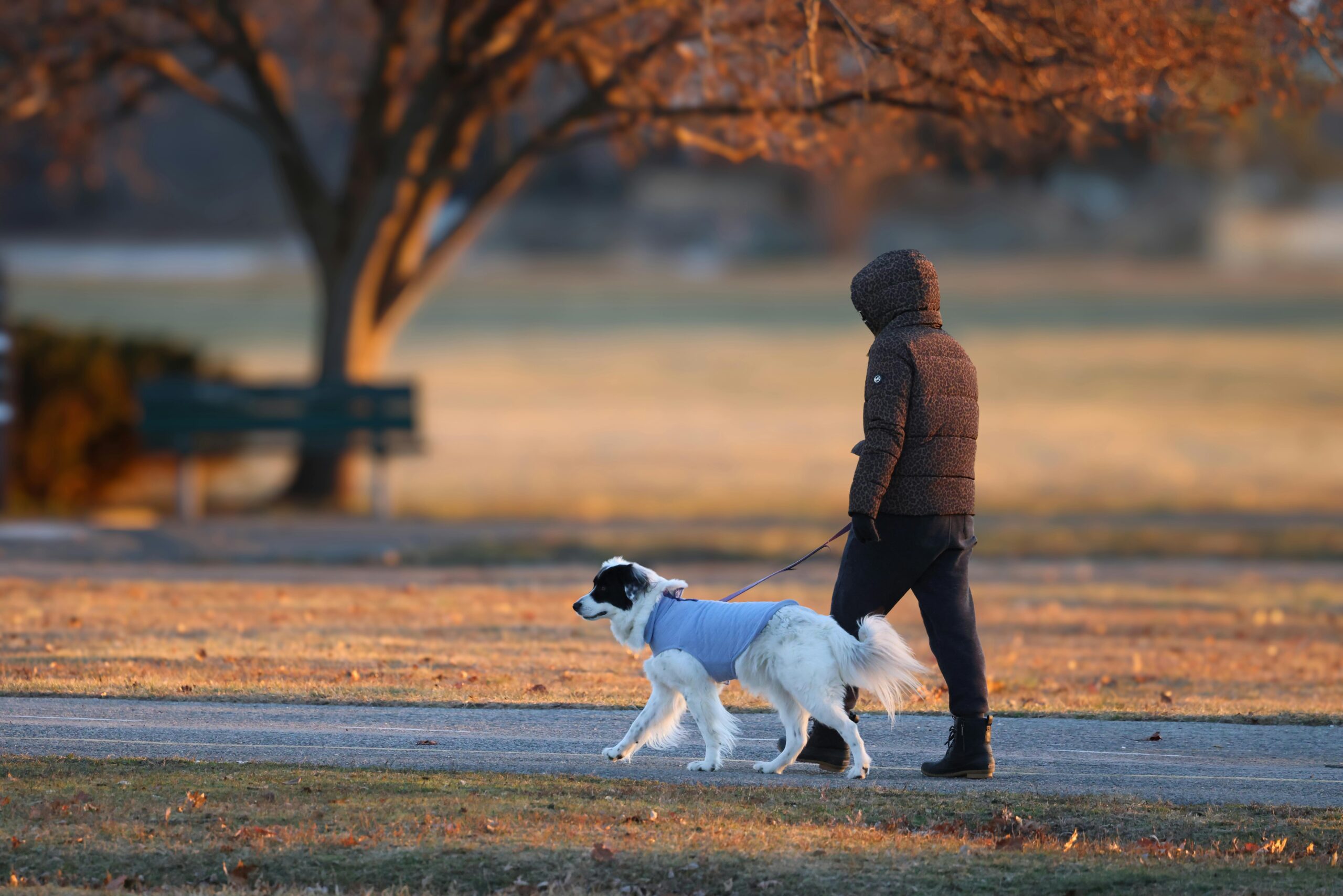Walking is more than just physical exercise for dogs—it’s a critical component of their mental stimulation, behavioral balance, and overall health. But did you know that the ideal walking routine varies significantly depending on your dog’s age? Whether you’re dealing with a bouncy puppy, a high-energy adult, or a slower-moving senior, this guide will help you structure the perfect walk routine tailored to each life stage.
Why Walks Matter at Every Age 🐶
Every dog benefits from daily walks, but not all walks are created equal. Here’s why they matter:
- Physical health: Keeps muscles toned and joints flexible.
- Mental engagement: New smells, sights, and sounds stimulate your dog’s brain.
- Behavioral benefits: Helps reduce anxiety, boredom, and destructive habits.
- Bonding opportunity: Strengthens the connection between you and your pet.
Walking Routine for Puppies (2–12 Months)
Characteristics
- Energetic, curious, and still developing physically and mentally.
- Prone to distractions and short attention spans.
- Joint and bone growth are still in progress, so moderation is crucial.
How Often and How Long?
- Frequency: 3–4 short walks per day.
- Duration: 5 minutes of walking per month of age, up to 30 minutes per walk.
- Example: A 3-month-old puppy = 15-minute walks.
Key Tips
- Focus on training: Use walks as an opportunity to practice leash skills and commands.
- Avoid overexertion: Too much exercise can harm growing joints.
- Introduce new environments: Encourage confidence and socialization gradually.
- Bring treats: Reward calm behavior, sitting at curbs, or walking without pulling.
Walking Routine for Adult Dogs (1–7 Years)
Characteristics
- Physically matured and at their peak energy levels.
- Need consistent mental and physical stimulation.
- Breed traits greatly influence exercise needs.
How Often and How Long?
- Frequency: 2–3 walks per day.
- Duration: 30–60 minutes total per day, adjusted based on breed and temperament.
- High-energy breeds (Border Collies, Huskies) may need 90+ minutes daily.
- Calm breeds (Bulldogs, Basset Hounds) may do well with 30–45 minutes.
Key Tips
- Mix up routes: Introduce novelty to keep things stimulating.
- Allow for sniffing time: “Sniff walks” can be mentally enriching.
- Incorporate games: Tug, fetch, or obedience games during breaks.
- Be consistent: Routine helps prevent behavioral problems and weight gain.
Walking Routine for Senior Dogs (7+ Years)
Characteristics
- Energy levels drop, joints may ache, and vision or hearing could decline.
- Still benefit from walks, but need gentler routines.
How Often and How Long?
- Frequency: 2 short walks per day.
- Duration: 15–30 minutes per walk, depending on stamina and health.
Key Tips
- Go at their pace: Don’t rush or push beyond comfort.
- Stick to soft surfaces: Grass or dirt paths are easier on aging joints.
- Use harnesses: A harness distributes pressure better than collars.
- Watch the weather: Senior dogs are sensitive to heat and cold.
Adjusting the Routine Based on Breed
Breed characteristics play a big role:
- Working and herding dogs: Need longer, structured walks and off-leash time if safe.
- Toy breeds: Have smaller steps and tire more quickly—shorter walks are ideal.
- Brachycephalic breeds: Bulldogs and Pugs may struggle with heat—walk during cooler hours.
- Hounds: Follow their nose; incorporate sniff breaks and directional changes.
Sample Daily Walking Routines
| Dog Age | Time of Day | Activity | Duration |
|---|---|---|---|
| Puppy (4 mo) | Morning | Short neighborhood walk | 20 mins |
| Puppy (4 mo) | Afternoon | Backyard playtime + leash practice | 15 mins |
| Adult (3 yrs) | Morning | Fast-paced park walk | 30 mins |
| Adult (3 yrs) | Evening | Leisure walk + fetch | 30 mins |
| Senior (10 yrs) | Morning | Slow sidewalk stroll | 20 mins |
| Senior (10 yrs) | Evening | Calm walk + sniffing | 15 mins |
Common Mistakes to Avoid
- Skipping walks due to weather: Find alternatives like indoor play or short sessions.
- Not adjusting for age: Puppies and seniors have very different needs than adult dogs.
- Pulling on the leash: Use positive reinforcement to correct gently.
- Overwalking: Especially harmful for puppies and older dogs.
Tools to Improve Walks
- Harnesses over collars: Especially for dogs that pull or have trachea issues.
- Waste bags: Always clean up after your dog.
- Portable water bottle: Essential in warm climates or long outings.
- Reflective gear: For early morning or evening walks.
Making Walks a Joy, Not a Chore
Walking shouldn’t be seen as a task—it’s a chance for bonding, enrichment, and fun. Pay attention to your dog’s cues, vary your routes, and allow them time to explore. The more you enjoy it, the more your dog will too.
Closing Thoughts: Adapting with Time
Dogs change as they grow, and your walking routine should grow with them. By tailoring the frequency, length, and intensity of your walks to their life stage, you’re not just exercising your dog—you’re nurturing their quality of life, ensuring happiness and health through every chapter.

